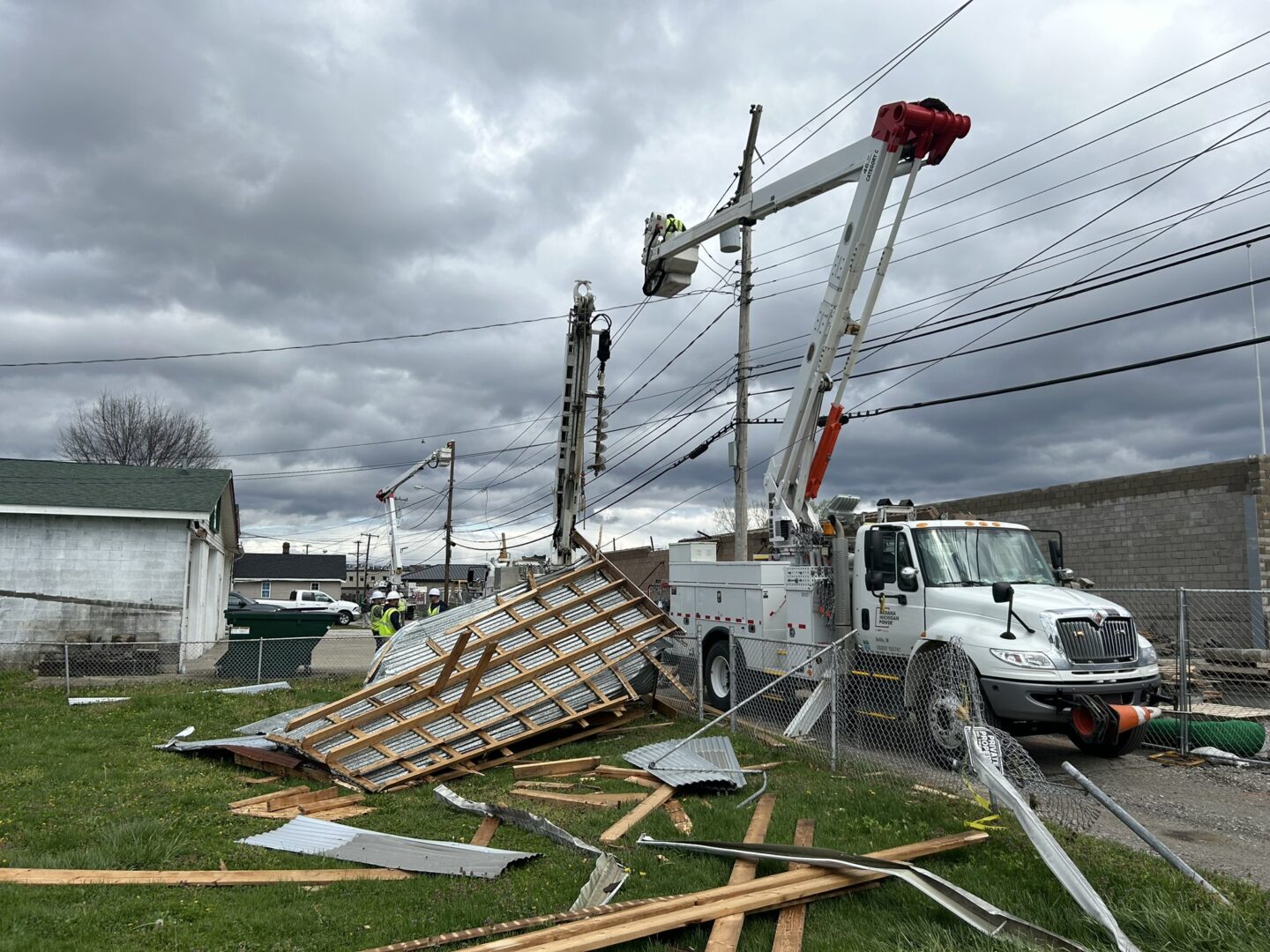
SOUTH CHARLESTON, W.Va. — A line crew from Fort Wayne, Indiana huddled along a side street from MacCorkle Avenue in South Charleston Wednesday afternoon. The foreman gave safety instructions to his assembled team and then assessed what needed to be done to restore power as quickly as possible.
To his left were three utility poles sheered off halfway up. The remnants of those poles lay on the opposite side of the street as a testament to the power of Tuesday’s winds which rolled through the region. The roof of a tool shed was laid out across a power line to the foreman’s right and behind him, down the alley was one broken cross arm after the another.
“Lots of fallen trees, lots of damaged equipment, we’ve seen tons of poles that are cut in half,” said Appalachian Power Company spokesperson Karen Wissing. “We’re not only having to put up poles, but we’re having to put up infrastructure like transformers that are on the ground.”
At the height of the storm more than 125,000 Appalachian Power Customers were without service. By Wednesday night the figure was down to about 55,000. In Kanawha County, the number dropped to just below 28,000.
Full restoration is expected by Thursday at 11 p.m. However, that’s the worst case scenario, many will start to see power restored as line crews move down each line from the sub-station to assess and repair damage.
“We’ve got a lot of challenges. We’re using drones to assess areas where we can’t get to with boots on the ground and we’re also using helicopters,” Wissing explained. “We do have some smart technology deployed across our systems that allows the fault to be found quickly, but in some cases like this we have to visually look.”
The crew from Indiana-Michigan Power Company is a subsidiary of AEP. They are one of many in West Virginia helping out.
“We have a lot of mutual aid from not only AEP, but we also have aid from Alabama, Maryland, over 2,200 personnel here working between Charleston and Huntington,” she added.
The hardest to reach areas will be in rural locations where the damage is more isolated and harder to access. Those areas often serve the fewest customers and typically are last to be restored because of the priority to fix circuits serving the highest number of customers first.


